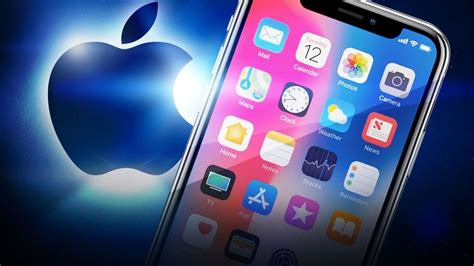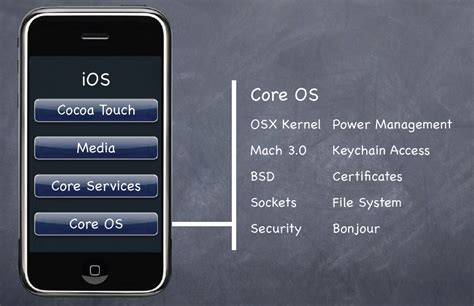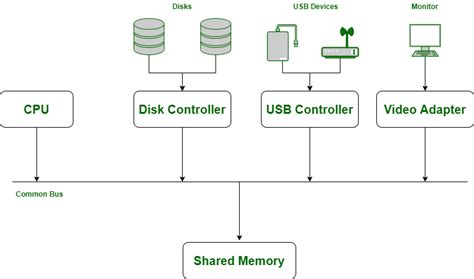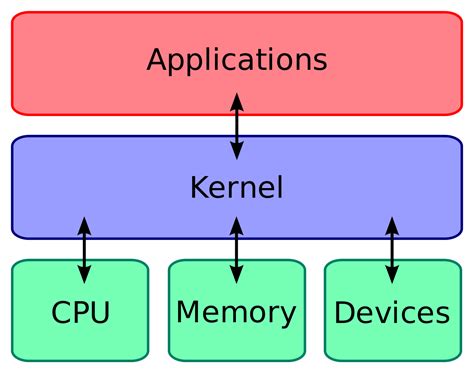Behind every tap, swipe, and multitasking gesture lies a sophisticated system that powers one of the most popular mobile operating systems in the world. This in-depth exploration peels back the layers of the iOS ecosystem, revealing the intricate inner mechanisms that make it all possible.
Imagine a seamlessly interconnected web of complex algorithms, meticulously designed to optimize performance and user experience. Within this digital realm, every component has a purpose, every line of code has a function. From the moment you power on your device, an intricate dance of hardware and software begins, orchestrated by iOS.
Consider iOS as the conductor of a symphony, harmoniously guiding the various instruments within your device. The processors, memory, and storage form the ensemble, each with their unique strengths and capabilities. iOS acts as the maestro, ensuring that every note is played in perfect synchronization, resulting in a smooth and responsive performance.
At its core, iOS is more than just an operating system; it's an ecosystem built on a foundation of security and privacy. With a fortress-like approach to protecting user data, iOS employs a multi-layered defense mechanism that safeguards personal information without compromising functionality. Encryption, biometric authentication, and app sandboxing are just a few of the robust security features that contribute to the peace of mind iOS users enjoy.
This comprehensive guide invites you to delve deeper into the inner workings of iOS, exploring the intricate details that enable seamless multitasking, effortless integration with Apple's ecosystem, and the unparalleled user experience that has set iOS apart from its competitors.
Exploring the Underlying Structure of the iOS Platform
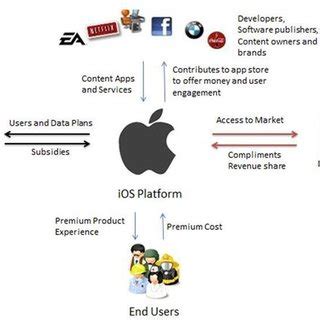
In this section, we will delve into the intricate architecture that forms the foundation of the highly advanced iOS operating system. Without employing technical jargon, we will navigate through the various layers and components that interact harmoniously to power the seamless user experience we have come to associate with Apple devices.
First and foremost, let us take a closer look at the core of iOS, where the magic truly happens. At its heart lies the kernel, the internal engine that manages essential processes such as memory management, device drivers, and security mechanisms. The kernel acts as the bridge between the hardware and the upper layers of the system, enabling smooth communication and coordination.
Surrounding the kernel, we encounter the essential building blocks that shape the iOS architecture. These include the libraries, frameworks, and APIs that drive the vast array of functionalities offered by iOS. These tools empower developers to create immersive and interactive applications, harnessing the full potential of Apple's cutting-edge hardware.
Furthermore, within the iOS architecture, we find the key services and daemons that work tirelessly in the background to maintain system stability and functionality. From power management to network connectivity, these services ensure that iOS devices operate seamlessly and efficiently across diverse environments.
Lastly, let us not forget the graphical user interface (GUI) that brings the iOS experience to life. Through the use of intricate rendering engines and advanced UI frameworks, iOS provides users with a visually appealing and intuitive interface that facilitates effortless navigation and interaction.
By understanding the underlying architecture of iOS, we gain invaluable insights into the inner workings of this powerful platform. This knowledge not only enhances our appreciation for the seamless experience that iOS offers but also empowers us to make informed decisions when developing applications and utilizing the full potential of Apple devices.
Exploring the Core Components of iOS
Understanding the inner workings of Apple's mobile operating system involves delving into its fundamental building blocks. This section aims to provide a comprehensive overview of the core components that form the foundation of the iOS ecosystem.
| Component | Description |
|---|---|
| Kernel | The kernel serves as the heart of iOS, responsible for managing various hardware resources and providing essential services for the operating system. |
| File System | iOS employs a unique file system that organizes and secures user data, applications, and system files. Understanding its structure is crucial for optimizing storage and ensuring data integrity. |
| Frameworks | Frameworks offer reusable code libraries that developers leverage to build iOS applications. These powerful tools provide access to various functionalities, such as user interface elements, networking capabilities, and multimedia integration. |
| Core Services | iOS relies on a collection of essential services, such as networking, security, and authentication, to deliver seamless functionality and enhance user experience. |
| UIKit | UIKit is a prominent framework that facilitates the creation of visually appealing and interactive user interfaces. It provides a range of UI elements, animations, and gesture recognizers that form the backbone of iOS app design. |
| Security Architecture | iOS incorporates robust security measures to protect user data and ensure device integrity. Exploring the security architecture sheds light on encryption, secure boot processes, and safeguards against threats. |
| App Life Cycle | Understanding how apps interact with iOS is crucial for both developers and users. Knowledge of the app life cycle, including background execution, state preservation, and termination, enables efficient app management and optimization. |
By acquainting ourselves with these core components, we gain insights into the intricacies of iOS and unlock the potential to develop, optimize, and utilize its capabilities to their fullest extent.
The Important Role of the iOS Kernel in Enhancing Device Performance
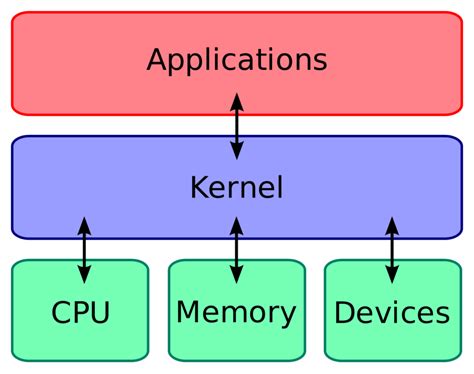
Within the intricate architecture of the iOS operating system lies a crucial component known as the kernel. This fundamental element plays a pivotal role in optimizing and enhancing the performance of iOS devices, ensuring a smooth and efficient user experience.
The iOS kernel serves as the heart of the operating system, responsible for managing various essential functions and resources of the device. It acts as a bridge between the hardware and the higher layers of the software stack, enabling seamless communication and coordination between different system components.
One of the primary responsibilities of the iOS kernel is managing memory allocation and ensuring efficient resource utilization. By implementing robust memory management techniques, the kernel ensures that apps and processes have access to the necessary memory resources, preventing unnecessary bottlenecks and enhancing overall performance.
The kernel also plays a vital role in handling multitasking capabilities on iOS devices. Through intelligent scheduling algorithms, it enables efficient task prioritization and context switching, allowing the device to seamlessly switch between different applications and processes while maintaining optimal performance and responsiveness.
Furthermore, the iOS kernel is responsible for implementing various security mechanisms to protect the device and its data. It enforces stringent access controls, ensuring that only authorized processes and apps can access sensitive information. Additionally, it facilitates secure communication between different components of the system, safeguarding against potential security threats.
Additionally, the kernel manages power consumption on iOS devices, optimizing battery usage to prolong device uptime. It employs power-saving techniques such as CPU frequency scaling and intelligent sleep modes, allowing devices to deliver optimal performance while conserving energy.
- The iOS kernel's role in memory management
- Efficient multitasking and task scheduling provided by the kernel
- Security mechanisms implemented by the iOS kernel
- Power management and battery optimization by the kernel
In summary, the iOS kernel serves as a critical component in ensuring the smooth operation, enhanced performance, and security of iOS devices. Its efficient management of system resources, intelligent multitasking capabilities, robust security measures, and power optimization techniques collectively contribute to delivering an exceptional user experience on iPhone and iPad devices.
Unraveling the Mysteries of the iOS App Development Process
Developing apps for the iOS platform entails a fascinating journey that involves numerous intricate steps and processes. In this section, we will delve into the intricate workings behind the scenes of iOS app development, exploring the workflow, tools, and methodologies employed by developers to transform innovative ideas into fully-functional and user-friendly applications.
The Ideation Phase:
Before diving headfirst into the development process, app creators must begin by brainstorming and refining their ideas. It is crucial to define the app's purpose, target audience, and unique features that set it apart from existing applications. This phase involves market research, identifying user needs, and creating a comprehensive plan that specifies the app's functionalities and design.
The Design Phase:
Once the concept is solidified, developers shift their focus towards creating the app's visual and interactive elements. This stage involves wireframing, prototyping, and designing the user interface (UI) and user experience (UX). Designers collaborate with developers to ensure the app's interface aligns with the brand's aesthetic while providing a seamless and intuitive user experience.
The Development Phase:
During the development phase, developers bring the app to life by writing code using programming languages such as Swift or Objective-C. They utilize integrated development environments (IDEs) like Xcode to code, test, and debug the application. Additionally, developers implement functionality, integrate APIs, and optimize performance to ensure a smooth and efficient user experience.
The Testing Phase:
Thorough and meticulous testing is an integral part of the iOS app development process. Developers conduct various tests, ranging from unit tests to user acceptance tests, to identify bugs, improve stability, and ensure the app functions flawlessly across different iOS devices and versions. This phase also includes beta testing, where a select group of users provides feedback and suggestions for further enhancements.
The Deployment Phase:
Once the app passes rigorous testing, developers prepare it for deployment to the App Store. They generate necessary certificates and provisioning profiles, adhere to Apple's guidelines and submission requirements, and submit the application for review. This phase requires attention to detail and compliance with Apple's policies to ensure a successful launch on the App Store.
The Maintenance Phase:
After the app is launched, the development process does not end. Developers continually monitor and analyze user feedback, identify and address any issues that arise, and release updates and feature enhancements. This phase involves regular maintenance, bug fixes, and staying up-to-date with the latest iOS updates and advancements.
By demystifying the iOS app development process, we gain a deeper understanding of the immense effort and creativity involved in bringing captivating and functional applications to the Apple ecosystem. Through meticulous planning, thoughtful design, and relentless dedication, developers shape the digital experiences that define the iOS app landscape.
Enhancing Security and Safeguarding Privacy in iOS

As the leading mobile operating system, iOS prioritizes security and privacy to ensure a secure and trusted user experience. This section delves into the various security features and privacy mechanisms implemented in iOS, aimed at safeguarding user data and protecting against potential threats.
iOS incorporates robust security measures at both the hardware and software levels. One notable feature is the Secure Enclave, a dedicated coprocessor within the device's chip that securely stores and handles cryptographic keys, ensuring their protection from unauthorized access. This hardware-based security provides a strong foundation for protecting sensitive data such as passwords, encryption keys, and biometric information.
In addition to hardware security, iOS employs multiple software layers to safeguard user privacy. One such mechanism is App Sandbox, which restricts the access and behavior of each app, preventing unauthorized interactions with other apps or system resources. This isolation ensures that apps can only access the data they require and protects against malicious activities.
iOS also incorporates rigorous app review and vetting processes before allowing them on the App Store. This includes analyzing app functionality, behavior, and adherence to strict guidelines, ensuring that only secure and trustworthy apps are made available to users. Furthermore, Apple regularly provides security updates and patches to address any identified vulnerabilities, keeping the device protected from emerging threats.
To further enhance user privacy, iOS offers various privacy-oriented settings and controls. Users have granular control over app permissions, allowing or denying access to sensitive information such as location, photos, or contacts. Additionally, features like Intelligent Tracking Prevention in Safari limit cross-site tracking, augmenting user privacy while browsing the web.
| Security Features | Privacy Mechanisms |
|---|---|
| Data protection with hardware encryption | Granular app permissions |
| Secure Enclave for secure key storage | Intelligent Tracking Prevention |
| App Sandbox for app isolation | App review and vetting processes |
| Regular security updates and patches |
Apple's commitment to security and privacy is essential in building consumer trust and ensuring a safe digital ecosystem. By implementing robust security features, safeguarding user privacy, and providing regular software updates, iOS aims to protect user data and provide a secure environment for its users.
[MOVIES] [/MOVIES] [/MOVIES_ENABLED]FAQ
What is iOS?
iOS is a mobile operating system developed by Apple Inc. It is specifically designed for Apple's mobile devices, including iPhones, iPads, and iPod touches.
How does iOS work?
iOS operates on a multitasking operating system, which means it can run multiple apps simultaneously. It uses a combination of hardware and software components, such as the processor, memory, and various sensors, to provide a smooth user experience.
What are the key features of iOS?
iOS offers a variety of features, some of which include a user-friendly interface, a vast selection of apps through the App Store, integration with other Apple devices and services, advanced security measures, regular software updates, and a strong emphasis on privacy.

